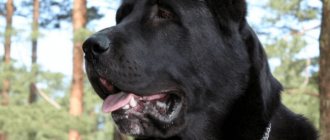- home
- Kinds
10/20/2018 When choosing a hamster for home keeping, the first thing you pay attention to is the color of the coat and its quality.
Then they are interested in the breed and living conditions of the animal. Some people like buffy, spotted, white or cream hamsters. But when a black hamster catches your eye, it is impossible not to notice it.
Black hamster - who is he?
A black hamster may have white paws and “socks”, but nothing else - no inclusions of a different color. This is a rare color that practically does not occur in nature, because the chances of two black representatives of the hamster species meeting are scanty.
The black hamster is not a breed or subspecies, but merely the result of a genetic code passed on from a female and a male with a black coat color.
It is possible to breed such a hamster at home, but it is extremely difficult. You need to get two different-sex representatives of the same black breed. Otherwise, even with a positive result, you can get non-viable offspring or kill the female. Of the dwarf breeds, it is permissible to cross a Campbell and a Dzungarik hamster.
The highest probability of finding a black “coat” is among Dzungarian or Syrian breeds of hamsters.
Variety of colors of dzungaria
Among Djungarian hamsters, black animals are rare. More often you can find a rodent with a natural color: a brown back with a dark longitudinal stripe, a light belly and white paws. This color is most common among dzungarians.
There are also unusual colors of animals:
- “Tangerine” color with red fur and a stripe along the back, like a natural color.
- Hamsters have sapphire-colored gray-blue fur.
- White color (“pearl”) is the rarest in Djungarian hamsters. White hamsters do not have a stripe on their back.
Syrian
The hamster was brought to Europe from Syria, where it lives in large numbers in the vicinity of the city of Aleppo. Under natural conditions, this animal can be found in eastern Turkey, in the foothills of Georgia. In winter they sleep like most hamsters.
The standard length for a Syrian hamster is 13.5 cm. At home, it can grow up to 20 cm. A distinctive feature of the body structure is a short tail, which may not be immediately noticed. This is one of the largest species that is bred at home. This is a clean animal that can bring joy.
Nature has endowed the rodent with four-fingered front paws and five-fingered hind paws.
The traditional color of Syrian hamsters is golden. But there are also white, beige, and chocolate brown. The black Syrian hamster looks very elegant. The fur is pleasant, soft and thick. Animals of this breed turn out beautiful if one of the parents is black and the other is white. The game of contrasts suits this nimble representative of the hamster family very well. A black and white hamster is as rare as a pure black one.
Children love Syrian hamsters very much; the animals willingly make contact and quickly understand what is required of them.
On a note. A positive feature is that the animal rarely gets sick and is quite unpretentious to its living conditions. You need to make sure that he has conditions for outdoor games, fresh food and clean water.
Black hamsters - who are they?
It turns out that black is not the type of rodent, but the color of its fur. And such an animal is found within different breeds of the hamster family. A hamster of this color is a rare occurrence. It can only be obtained by crossing two completely black individuals. If a rodent has even a small amount of another color in its fur, then it is no longer considered black, since such a hamster can have white color only on the tips of its paws.
Let's look at the main species in which rodents of this color are found.
Dzungarian
Black dwarfs are cute tiny creatures weighing up to 50 grams and up to 10 cm long.
But this color is uncharacteristic for these little ones, although it can be found even in natural conditions in Kazakhstan, the steppes of Siberia and Khakassia. In nature, they are often gray-brown with a dark stripe along the entire length. Djungarians of different colors have been obtained in captivity.
Just like Syrians, they are easy to train to handle. Not aggressive, flexible, sensitive to loud sounds and sudden movements. Therefore, they must be treated with love. They do not hibernate in winter, remain active all year round, and prefer evening and night time for games.
On a note. Djungarians are often bought in pairs. Black Djungarian hamsters get along well with each other, and in the future you can get wonderful offspring from them. The kids will get this rare color.
Unpopular breeds or wild hamsters
Most wild hamsters are nocturnal and hibernate briefly during the winter. They feed on both plant and animal foods, giving preference to the products of their habitat. Many of them build dens, break through long labyrinths, and small individuals use other people's houses.
Common hamster (karbysh)
A wild hamster can reach a size of 34 cm, and the length of its tail is 3-8 cm. It lives in steppes and forest-steppes, often settling next to humans. The skin is light: the back is reddish-brown, the belly is black. White spots on sides and front. There are black and black specimens with white spots. In the wild, carbohydrates live for 4 years, and under favorable conditions they can reach 6 years.
Common hamster
Gray hamster
The gray hamster is a rodent no larger than a mouse and belongs to the genus gray hamsters. Body length from 9.5 to 13 cm, gray back and light belly. The color of the peel may vary depending on the habitat. He doesn’t dig holes himself, but borrows someone else’s. The animal has large cheek pouches and small ears. In some regions it is listed in the Red Book.
Gray hamster
Hamster Radde
The Radde hamster is found in the foothills and mountainous areas and prefers plant foods. It multiplies quickly and destroys the grass, angering farmers. The animal reaches a size of 28 cm and weighs more than 700 grams. There are individuals weighing about 1 kg. The rodent's skin is silky: brown above, dark below with reddish “inserts”. There are white spots on the face and behind the ears. In the wild, the animal lives for about 3 years.
Hamster shaved
Eversmann's hamster and Mongolian hamster
Hamsters of the Eversman genus include two rodents similar in appearance and habits: the Mongolian and the Eversman. Both animals prefer steppes and semi-deserts. The Mongol lives in the deserts of the country, in northern China and in Tuva.
Mongolian hamster
Both animals do not exceed 16 cm in size, with a short tail - 2 cm. The Mongol is slightly smaller, the color of the back is lighter and there is no characteristic dark spot on the chest, like the Eversman hamster. The Eversman hamster may have a richly colored back of brown, black or gold. Both hamsters have light bellies and legs. They are listed in the Red Book.
Eversman's hamster
Barabinsky hamster
The animal belongs to the genus of gray hamsters. Lives in Western Siberia, Transbaikalia, Mongolia. The body length is up to 12-13 cm, the tail is about 3 cm. The rodent is dressed in red fur, with a black stripe running along the back: from clear to fluffy in different individuals. The abdomen is pale white. A special feature is two-color ears with a white border around the edges. There are 4 types of hamsters.
Drum hamster
Daurian hamster
The Daurian hamster is a species of the Barabensis hamster (Cricetulus barabensis Pallas). Lives in Western Siberia. The color of the back is darker than that of other subspecies. At the back there is a clear stripe.
Daurian hamster
Brandt's hamster
Belongs to the genus of medium-sized hamsters. The size of the individual is from 15 to 18 cm, the tail length is 2-3 cm, the weight reaches 300 g. It lives in the foothills of Transcaucasia, Turkey and Lebanon. The color of the back is brown, the belly is white or gray. The animal has a dark spot on its chest. On the neck around the head there is a double white stripe that starts from the mouth and ends near the ears. There are highlights on the cheeks. Lives for about 2 years.
Hamster Brandt
Hamster Sokolov
Little-studied representatives of the genus of gray hamsters. They live in Mongolia and China. Unlike many other members of the family, they do not harm cereal crops. The size of the animal is approximately 11.5 mm. He has gray skin and a pale belly. The hamster's tail is practically invisible. There is a dark stripe on the back. He will not live long in captivity because there is too little information about him.
Sokolov hamster
Chinese hamster
The Chinese hamster gets its name from its habitat. Belongs to the genus of gray hamsters. This is an animal with a slightly elongated body - 8-12 cm and a bare tail. The back of the animal is dark brown with a noticeable stripe. Rodents live on average 2.5 years.
Chinese hamster
Newton's hamster
A bit similar to the “Syrian”, but different in color and character. If the former are peace-loving, then “Newton” has an evil disposition. Its size is up to 17 cm, tail length is up to 2.5 cm. The rodent has gray-brown fur on its back with a black stripe from the head to the center of the body. The throat and part of the chest are covered with dark hair, and the belly is light.
Newton's hamster
Taylor's Hamster
These hamsters grow no more than 8 cm, their back is gray-brown, and their abdomen is light. They live in Mexico and Arizona. In nature, they use other people's burrows or build houses near rocks and crevices. They live in thick grass.
grasshopper hamster
The grasshopper or scorpion hamster lives in Canada and Mexico. Grows up to 14 cm, including the tail, weight 40-60 g. The skin is brown, the abdomen is light. The animal feeds only on insects, lizards and small rodents. Species of hamsters like this predator are no longer found. Even a scorpion can become its prey. The hamster is resistant to insect poison. These hamsters sometimes squeak for several seconds, raising their heads. This phenomenon is commonly called the howling of hamsters.
Hamster Grasshopper
Siberian hamster
The Siberian hamster is distinguished by a seasonal change of fur. This dwarf family member wears a dark gray suit with a brown stripe in the summer, and in the winter it turns into white fur with a gray line down the back. Animals grow up to 10 cm, and the maximum weight indoors is 50 g. In nature, rodents live 2.5 years, in captivity - up to 3 years.
Siberian hamster
Tibetan hamster
Dwarf Tibetan hamsters live in China. These types of hamsters can live in mountainous areas at altitudes of up to 4000 m above sea level. Animals grow up to 11 cm, with the tail making up almost half the body length. Their color is gray with dark and black veins. The tail is pubescent, with a black stripe running along its surface. The belly and lower part of the tail are light.
rat hamster
These crop pests live in northern China. The size of the animals is up to 25 cm, the tail grows up to 10 cm. The color of the back is gray-brown, the abdomen is light, the tail is brown, the paws are white, the soles are covered with hair.
Hamster rat
Short-tailed hamster
This breed of hamster lives in Tibet and China at an altitude of 4000-5000 m above sea level. Their color is uniform - brown, gray with a yellow tint. With a body length of up to 10 cm, they weigh 40 g.
Canese hamster
A little-studied species. Lives in deciduous forests of China. It feeds on plants and builds nests on the ground. The length of the animal is 17 cm, the tail is 10 cm. The rodent has thick fur, and white claws are visible on its thin paws. The color of the back is gray, there are white spots on the ears and cheeks, and the belly is also white.
Black hamster - care and maintenance, or where to place the animal?
There are no distinctive features in keeping black animals. It is necessary to focus on the breed. For example, baby dwarfs can take a standard size cage. An aquarium is also suitable, but you need to take into account that it should not be higher than 40 cm with a length of 100 cm. Otherwise, air exchange will be disrupted, and there will be increased humidity and stuffiness in the baby’s home. Fresh herbs, pieces of fruit and vegetables will spoil very quickly. Considering that this is a dwarf breed, life processes pass quickly, the hamster can be poisoned.
On a note. When choosing a cage for a dungeon, you need to pay attention to the width between the rods. For a dwarf breed, they should be minimal, otherwise the hamster will run away.
The Syrian black animal also loves space and cleanliness. Therefore, the cage is purchased larger than average. It is possible that with good care and a balanced diet, the pet will quickly grow to 20 cm and will have nowhere to turn in a small home.
It is important to choose a place that is comfortable for the animal. It is necessary to find a “golden mean” in order to withstand the following conditions:
- do not place near heat sources, under fans, or on a windowsill;
- drafts have a detrimental effect on the animal;
- Direct sunlight should not enter the cage;
- the animal’s home should not be accessible to other pets (cats, dogs);
- The room temperature is maintained at a comfortable level (not lower than 20℃).
Pictures of black hamsters are pleasant to look at, but you need to take into account that the animal will make noise at night.
How to equip a cage or aquarium for animals? Sample list:
- they put up a house where they can hide;
- two feeders and a convenient automatic drinker will make care easier;
- for an active life the animal will need a wheel, driftwood, tunnels;
- the best bedding is made from sawdust; it will absorb odors and moisture.
The cage needs to be cleaned regularly: wash the feeders and drinking bowl, change the bedding, wipe the bars with a damp cloth and wash the tray.
On a note. To keep their teeth in excellent condition, hamsters need a mineral stone or put twigs of fruit trees in the cage from time to time.
Features of care
The long-haired Syrian hamster needs careful care; its fur needs to be combed and any tangled debris removed. The main thing here is not to overdo it; bathing your baby in water is contraindicated - he may catch a cold. The baby himself will take care of the cleanliness of his “hair”. Install a sand bath in the cage so your pet can bathe and clean itself.
Cage and accessories
To make your baby comfortable, buy a cage measuring 50x30 centimeters. A good option is a dwelling with transverse rods. The cage must have a wheel with a diameter of at least 20 cm. This also applies to the house; it must be larger than for short-haired babies. Angora hamsters are very fond of all kinds of labyrinths and pipes, so you can buy a small-diameter multi-story dwelling for them. It’s good if the floors are connected by pipes, stairs or other loopholes.
Filler
The maintenance of “shaggy” dogs is practically no different from their short-haired counterparts, but they have long hair, which excludes shavings as bedding - they get tangled in the wool. For “shaggy” ones, wood pellets are suitable as a filler.
Angora hamster fur care
The home environment that you lovingly create will please the Angora. There is nothing complicated in caring for an animal, there is one “but” - long hair. Remember, she looks beautiful only if she is well-groomed, otherwise the baby will turn into a sloppy creature.
The fur is shaggy and needs to be combed to remove debris and tangled particles. You can use a toothbrush as a comb. It would be a good idea to purchase cleaning powder for long-haired hamsters. It is important to ensure that the wool becomes less dirty.
Feeding the Angora
The Angora hamster is unpretentious in feeding; it is suitable for the same diet as other domesticated rodents, the main thing is to feed it on time with high-quality food. If the baby does not have enough vitamins and minerals, the “hair” may look patchy and unkempt. Therefore, in order for the fluffy Syrian hamster to look beautiful, do not skimp on food.
Diet
Under natural conditions, hamsters use dry plants to build nests and feed on succulent ones, so do not exclude greens from the diet. As for fruits, they happily eat bananas, pears, and apples. Vegetables: carrots, zucchini, eggplant. They also need protein foods. What should you feed your Angora hamster besides store-bought food and treats? To ensure that he receives a full set of vitamins, once a week give him boiled yolk, breast milk, low-fat cottage cheese or kefir.
You need to make sure that your shaggy hamster eats only fresh food.
Periodically check to see if your baby has brought leftover food into the house - he may be poisoned by sour foods.
Favorite products:
- oats;
- corn;
- millet;
- flax seeds;
- green grass;
- dried fruits;
- nuts.
Prohibited Products
You should not give treats that contain dyes, preservatives, or harmful additives. Potatoes, citrus fruits, garlic and onions are strictly contraindicated for representatives of this breed, as well as:
- salty;
- sweet;
- exotic fruits, as well as watermelon;
- honey;
- almond;
- sorrel;
- canned food, smoked meats, pickled foods.
If you give your baby a piece of watermelon or a salted nut, he will not die. But problems with the gastrointestinal tract may begin. And why take the risk? These animals don’t live long anyway.
Duration and lifestyle
The Angora hamster does not need a roommate, so if you have purchased several fluffies, make sure that each has its own cage. If several individuals live in one dwelling, be prepared for serious fights.
Remember: Angora hamsters are territorial animals!
Angora hamsters can live up to 3 years at home. There are cases where representatives of this breed lived longer, up to 3-4 years, but only with good care. There is a world record holder who lived for 7 years.
In order for the baby to live as long as possible, you need not only to take good care of it, but also to choose the right pet. Examine his fur carefully; it should grow evenly, even on the pads of his feet, and be clean in the anus area. The eyes should be radiant and the nose should be dry.
Deviations from the norms can lead to serious illness and death of the pet. Compared to dungarian hamsters, Angora hamsters rarely get sick and have good immunity.
Important: you must visually like the baby.
What to feed a black hamster?
There are general rules when feeding domestic hamsters, which must also be followed when feeding representatives with black coats:
The main diet of the animals consists of grain, legumes, nuts, and seeds of edible plants.
- The animals are offered pieces of fruits and vegetables as vitamin supplements; 10–20 grams per day will be enough.
- Vegetables should be washed well before giving to the animal to prevent infection.
- Fruits should not be very sour.
- Rodents should not be given oranges or other citrus fruits. Exotic fruits are not the best choice for rodents.
- You can safely include carrots, pumpkin, and apples in your daily menu. Pears must be hard.
- Protein food must be present in the hamster's diet. This can be lean boiled meat and fish without salt, or natural low-fat cottage cheese.
How to pamper your pet? He will be grateful for raisins and seedless grapes. He will like dried fruits dried in natural conditions, without the use of chemicals and sugar.
There are now enough special balanced foods for rodents in stores. If you have doubts about the correctness of the diet, you can use ready-made mixtures.
On a note. Food that is enjoyable for humans can be extremely dangerous for rodents. This applies to chocolate, candies and other sweets. Garlic and onions, sorrel and any food from the table with spices and salt are dangerous for the animal’s delicate stomach.
Character and training
Angora hamsters have a gentle character, this is their main advantage. Fluffy hamsters are friendly towards people and get along with children. If you believe the reviews of the owners of cute creatures, they can follow the voice of the owner if he often communicates with the baby. To tame an Angora hamster, do not hesitate to talk to him. After he is no longer afraid of you, carefully pick him up.
If you buy a baby at the age of 1.5-2 months and immediately begin training, he will very quickly get used to the tray and also master other skills.
The Angora hamster is a very gentle and vulnerable creature, so try not to scream in his presence, but behave calmly. Despite this, Angora rodents are very brave, so from the first meetings they are not afraid of humans. They are funny: to cheer yourself up, watch your baby’s behavior during the period of his activity.
How long does a black hamster live?
The lifespan of a black hamster depends on the breed and conditions of detention.
The average life expectancy in the wild is two years. It is capable of obtaining food for itself and reliably hiding in burrows; however, hamsters often become prey to predatory animals.
If an animal lives in captivity, it is provided with conditions for active pastime and is provided with high-quality food, and will live for 4 years.
On a note. To prolong the pet's life, it is protected from stress and its health is closely monitored.
Breed Features
What is the name of a shaggy hamster? This is a Syrian hamster and it has its own characteristics:
- Syrian hamsters live in separate burrows, but not far from their fellows;
- love to sleep, especially in winter;
- the female bears offspring for 14 days; in the spring (during the active period), about 15 babies are born in one family.
Externally, fluffy hamsters look like guinea pigs, and are sometimes confused with these animals. Angora hamsters are noticeably larger in size than Djungarian hamsters.
Main diseases of Syrians and their prevention
Syrian hamsters very rarely get sick. To minimize the risk of disease, you need to buy them from a registered breeder and keep them properly. Regular checks with a veterinarian are sufficient prevention for them. And yet, Syrians can sometimes get sick.
Let us highlight the main signs of deteriorating health in a hamster. If you notice them, take your pet to the veterinarian for an examination. Home treatment is not the best option.
So, the signs you should pay attention to:
- lack of appetite, strong pickiness in choosing foods;
- increased secretion of saliva, wet fur from below the muzzle;
- digestive disorders: liquid, dry or hard feces;
- tearfulness or purulent discharge covering the eyelids;
- respiratory tract diseases: wheezing, wheezing;
- deterioration of the coat: hair loss, wounds, scratching;
- reluctance to be physically active
- trembling, convulsions, loss of coordination;
- unnatural formations on the hamster's body.
How is breeding carried out?
The Chinese rodent is bred when it reaches 2-3 months of age. The process of gestation of the brood reaches 25 days. After giving birth, the female becomes aggressive towards males. These animals are much more difficult to breed than other types, therefore, they are rare animals in the pet store and among breeding specialists.
During the breeding process, a number of difficulties are identified. A pregnant female becomes hostile to the male, during which the essential point is that the cage where the animals of this family live is large and has many secluded places where the male could hide during this period.
What is the character of hamsters?
Rodents are active and curious Providing a Home for a Hamster. Animals are interesting to watch when they play in a cage. If a pet has been accustomed to communicating with a person since childhood, it can calmly sit in your arms. Hamsters rarely bite All About Syrian Hamsters: mainly when they are frightened by a sudden movement. Before communicating, for example, with Syriac, it is recommended to wash your hands. He has poor eyesight, so he relies on smell and touch. If the owner's fingers smell of food, the animal can taste them.
It is not worth keeping individuals in pairs. Even when they live together from an early age, conflicts can arise over time.
If you are still going to buy several animals, it is better to place them in different cages.
Keep in mind that rodents are nocturnal. They sleep during the day, so it is better to play with them in the evening. If you decide to wake up your All About Syrian Hamsters pet, do it very carefully. Talk to him in a gentle voice and lightly rustle the bedding in the cage.
How to care for a hamster
To keep your pet healthy, you need to regularly clean its cage. Do this in the evening The ideal home for your hamster, when the animal is awake. Dispose of How to Clean a Hamster Cage stale food scraps from bowls every day. Pour clean water into the drinking bowl. Remove feces and wet areas of litter.
If your home looks clean, but it smells bad, you need to replace the filler completely. Sometimes rodents bury food in it, which eventually begins to rot.
Do general cleaning once a week. All you need is a sponge and a non-toxic disinfectant from a pet store. The latter can be replaced with mild hand soap: aggressive chemicals are poison for your pet. When everything is ready, remove the hamster from the cage and place it in a safe place. Don't forget to keep an eye on him. Thoroughly rinse the structure, bowls, running wheel and other accessories. Make sure everything is dry before putting it back in place.











